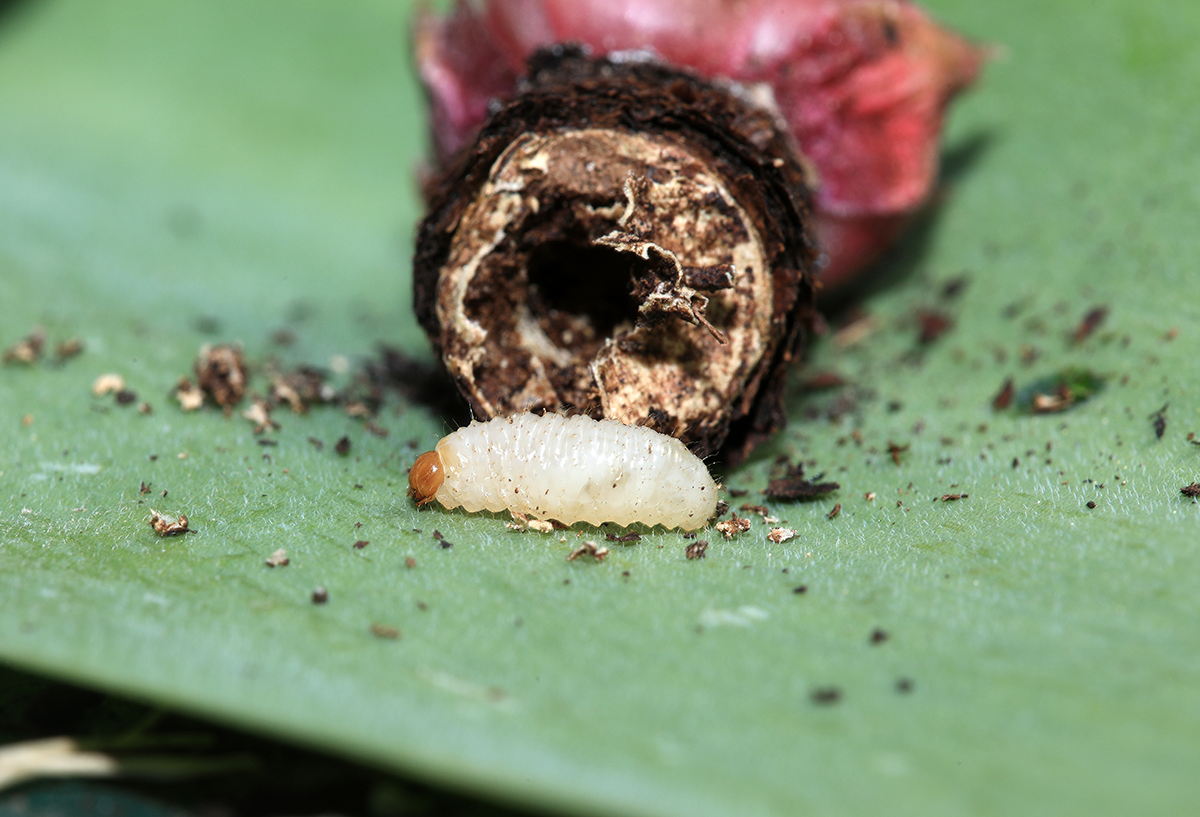
The vine weevil (Otiorhynchus sulcatus) is native to the UK and Europe but is now established throughout Australia and North America. It feeds on a wide range of host plants, including ornamental plants, fruits and vegetables. Vine weevils have been one of the most economically important pest species of global horticultural crops for the past five decades.
Adding to their economic impact is the vine weevil’s unique reproductive capability. Vine weevils have the ability to reproduce parthenogenetically, a form of asexual reproduction in which the growth and development of an embryo occur directly from an egg without the need for fertilisation, with each female being able to lay several hundred eggs. However, interestingly, no male vine weevils have been observed in wild populations, even though the species seem to have the ability to produce males. This form of parthenogenesis is known as thelytoky and is believed to result from a reproduction-mediating symbiont Wolbachia, which has been found to be present in all wild populations tested. These symbionts are defined as “an organism living in symbiosis with another” and are often not harmful, but in vine weevils’ case, this species of bacteria appears to block the emergence of male vine weevils.
 Beyond their unique reproductive capabilities, vine weevils are also significant due to their ability to infest many types of crops. Adult vine weevils feed on plant leaves, creating notched edges. Although this leaf damage is usually minimal and primarily cosmetic, it can reduce the aesthetic appeal of ornamental plants. More damaging, however, are vine weevil larvae, which feed on the roots of plants. This root feeding can significantly stunt or weaken plants and sometimes cause plant death, ultimately impacting crops’ overall yield and quality.
Beyond their unique reproductive capabilities, vine weevils are also significant due to their ability to infest many types of crops. Adult vine weevils feed on plant leaves, creating notched edges. Although this leaf damage is usually minimal and primarily cosmetic, it can reduce the aesthetic appeal of ornamental plants. More damaging, however, are vine weevil larvae, which feed on the roots of plants. This root feeding can significantly stunt or weaken plants and sometimes cause plant death, ultimately impacting crops’ overall yield and quality.
Due to the danger to agriculture, the Chemical Ecology group at NRI has been working in collaboration with colleagues at Harper Adams to produce a prototype smart trap for weevil monitoring. This trap uses volatile chemical attractants to lure the insect into the trap and a motion sensor-activated camera to take a photo of the insect. The on-board computer then uses AI technology to identify the insect and informs the user of the presence of the pest.
The ability to detect vine weevils at low numbers is especially important as growers have successfully implemented greener and more sustainable pest control methods, using entomopathogenic nematodes (threadworms which infect insects) rather than relying on conventional insecticide use. However, these methods can be costly and would be more effective with improvements to detection methods, which are currently unreliable. With further development, our smart trap, will have many advantages over these conventional monitoring tools, such as 24-hour monitoring, improved weevil attraction and reduced staffing commitments from the growers.

